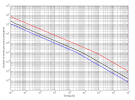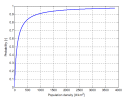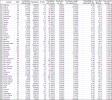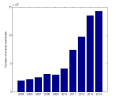tohuwabohu
Jedi Master
I also created the curve showing number of events in relation to the object size for the estimated time to perihelion 32.9 years. I will take the estimate as the reference point and perhaps we can try to find some database with number of impacts for different object sizes. In this way we could see whether there is good agreement with observations along the curve. If not then we can estimate some kind of interval in which the ETA of the companion might be. I might wanna look at the AMS database first.
I will also try to construct the energy histogram curve that is similar to that in Fig. 24 but with energy in kilotons on the x-axis instead of asteroid size. The problem is that the velocity of the incoming objects is independent of their size thus it can be anywhere from 13 km/s to 73 km/s upon atmospheric entry. In scientific papers there is a convention to take average velocity 20.3 km/s but this would underestimate possible energy of the incoming objects.
I will also try to construct the energy histogram curve that is similar to that in Fig. 24 but with energy in kilotons on the x-axis instead of asteroid size. The problem is that the velocity of the incoming objects is independent of their size thus it can be anywhere from 13 km/s to 73 km/s upon atmospheric entry. In scientific papers there is a convention to take average velocity 20.3 km/s but this would underestimate possible energy of the incoming objects.








